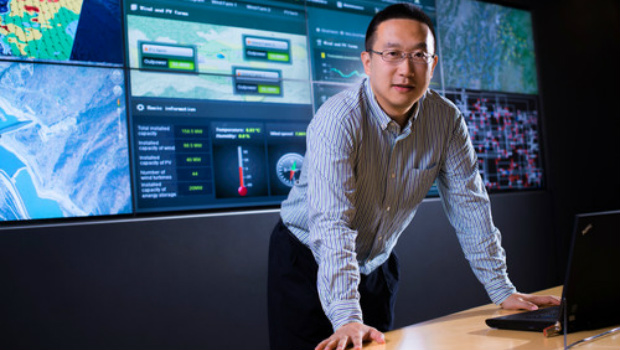China’s nagging pollution problems could start to abate with the help of an IBM project that seeks to predict and control the air quality in Beijing, using new computing technologies.
On Monday, IBM announced it was partnering with the Chinese capital to address the city’s ongoing air pollution woes. Populated by over 21 million people, Beijing is one of the country’s largest municipalities and among the Chinese cities with some of the worst air quality in the nation, with pollution levels often rising to hazardous levels.
Causing the smog are the millions of cars in Beijing, the surrounding factories, fossil fuel burning power plants, and the pollution coming from other neighboring cities. Despite the complexities, IBM wants to accurately map the problem with computer modeling.
“You could then take a lot of actions to improve your air quality,” said Jin Dong, an IBM Research director involved in the project (pictured).
Using supercomputers to predict and study pollution patterns is nothing new. And already, China’s government agencies, and the US Embassy in Beijing, publicly report real-time pollution levels to residents.
But IBM is hoping to design a better system tailored for Beijing that can predict air quality levels three days in advance, and even pinpoint the exact sources of the pollution down to the street level, explained Dong.
IBM has 20 years of experience in weather modeling, he added, but forecasting the air quality will require new computer modeling to take into account all of Beijing’s different pollution sources. Along with the city, IBM is also partnering with academics and industry players to pull pollution-related data from local air quality monitoring stations, weather satellites, and the company’s own optical sensors.
The pay-off could be big. By successfully forecasting Beijing’s pollution patterns, the system could also suggest preventive measures to keep the city’s air quality from approaching hazardous levels. The government would know when to reduce production at certain factories, or where to limit car traffic, said Xiaowei Shen, director of IBM Research in China.
“You not only have to build a model that can predict. You have to provide a decision system so that people can take proper action,” Shen said.
IBM’s partnership with Beijing is just part of the US company’s larger effort, called Green Horizon, to work with China in solving its environmental and energy issues. The company has already been designing systems to better manage the country’s electric grid. One such solution is helping wind turbine and solar power operators accurately forecast their energy output, turning them into more reliable power generators.
IBM will need not just technology to solve the problems, but also participation from the entire industry. The company hopes that the Green Horizon project can attract more partners, Shen said. “It really requires us to build an eco-system,” he said. “This is a very broad area. It requires a lot of innovation.”
IDG News Service








Subscribers 0
Fans 0
Followers 0
Followers